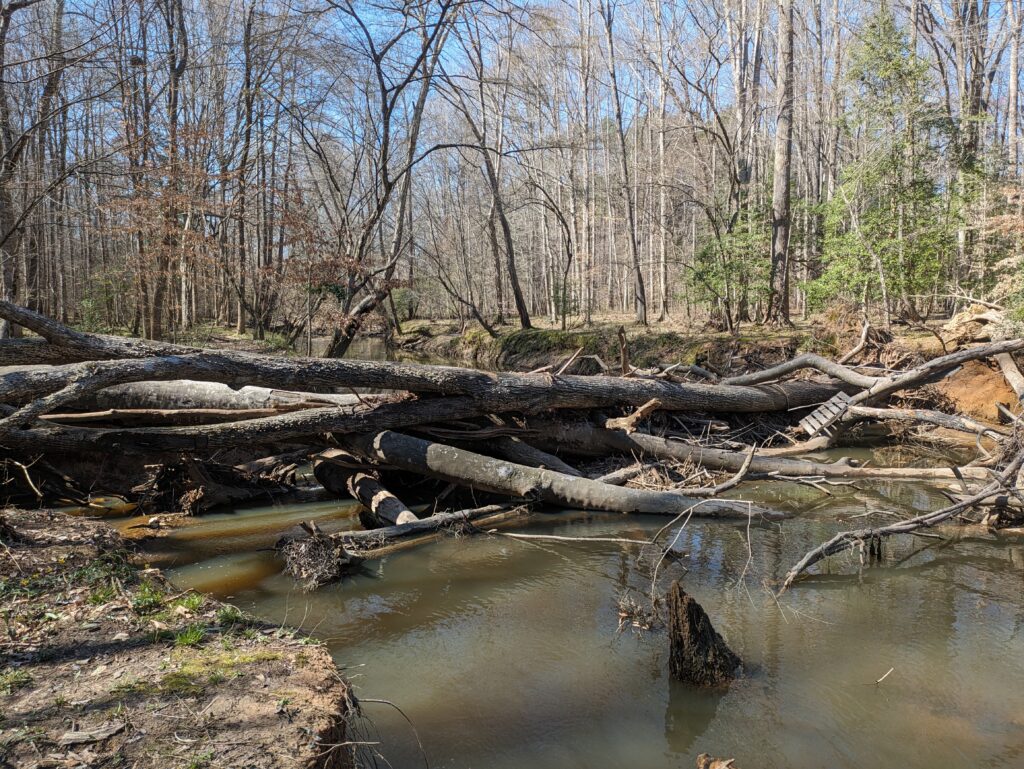By Patrick Boleman, Land Stewardship Manager East

Swift Creek Bluffs Nature Preserve offers unique experiences for visitors to connect with nature in a rapidly urbanizing environment. The floodplain habitat boasts a variety of ephemeral (plants that emerge and bloom quickly) wildflowers and bottomland tree and shrub species from bloodroot to paw paw. Ascending the Stairway to Heaven, hikers are rewarded with views of Swift Creek below while traversing the bluff’s ridge line.
Over the past few years, Swift Creek Bluffs has experienced the loss of multiple mature beech trees within the creek corridor which numbered among the oldest in the preserve. When these trees fell, they resulted in a domino effect taking down other trees with them and creating large debris blockages within the stream. These blockages have in turn altered the stream flow causing substantial streambank erosion, the loss of creek-side trails, and even eroding to the point of impacting the bluff itself. If left unchecked, these blockages and corresponding erosion will continue to negatively impact the floodplain habitat TLC is trying to conserve.

Thanks to a grant from North Carolina’s Streamflow Rehabilitation Assistance Program, TLC will be conducting a restoration project to remove these blockages and restore streamflow to prevent further streambank and floodplain habitat loss. In coordination with an adjacent landowner, contractors will access blockages from the opposite side of Swift Creek from the preserve to carefully extract and remove vegetative debris.
Visitors will notice trail closures to ensure the safe and efficient completion of the stream restoration project. Please respect all trail closures for your safety and allow contractors to perform their work effectively. Unfortunately, the creek spur trail will be indefinitely closed due to sections having been lost to erosion, but the main trail will remain open!
This stream restoration project will improve the long-term conservation of Swift Creek Bluffs through mitigating erosion, reducing flood disturbance, and preserving floodplain habitat. Upon completion of stream blockage removal, TLC will further conservation efforts through trail delineation to allow for passive restoration of the floodplain where off-trail traffic has damaged the understory wildflower population. Hikers are asked to respect floodplain exclusion zones to allow the diverse herbaceous vegetation to flourish.
Questions about stream and habitat restoration may be directed to Patrick Boleman at [email protected].
